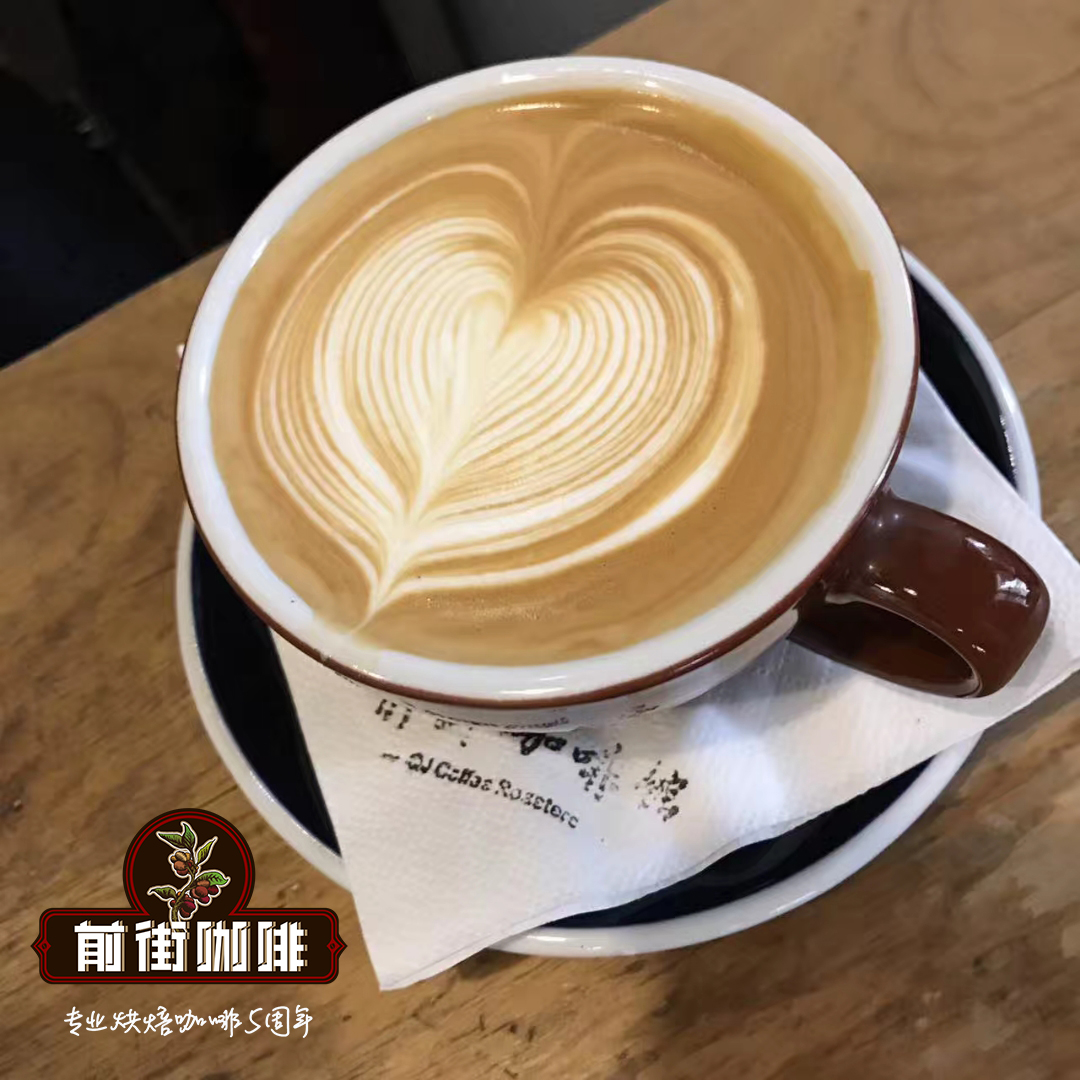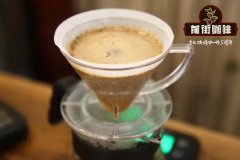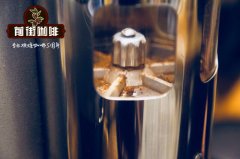Latte | Why does a good-looking latte sometimes bubble after a while?

If you leave the latte on the table for a few minutes, sometimes the bubble will start to burst, but sometimes it won't. Why?
No matter how long you throw it, sometimes the latte will bubble. If you have ever had to make a new cup of coffee after sitting on the counter for a few seconds and then taste it, you know it can be frustrating.
First of all, make sure it's not your technical problem.
The first thing to eliminate is any technical flaws in you. Steaming milk to minimize bubbles is one way to ensure that you get long-lasting silky foam.
Smaller bubbles can not only make the milk foam have a better look and feel, but also make the foam more stable and the discharge speed is not fast. In fact, Professor Abbott explained that halving the bubble size tripled the drainage time. As the liquid is discharged from the foam, the bubbles become more likely to converge or burst, leaving dry bubbles with atmospheric bubbles.
In addition, if all bubbles are small, Ostwald ripening will be reduced. This is an unfortunate process for any bubble that causes the smaller bubble to become smaller and the largest bubble to become larger. A small bubble has a higher internal pressure, which pushes the gas out of it and dissolves it in the surrounding water. At the same time, the larger bubbles nearby absorb the gas and expand.
If you steam the milk correctly and do not produce visible bubbles, the difference between the smallest and largest bubbles in the foam will be smaller. If some bubbles are much larger than others, Ostwald ripening will cause them to expand more, while the smallest bubbles will contract. As a result, milk cooking technology can produce the smallest bubbles without mixing with larger bubbles, thus the resulting foam can maintain its texture for a longer time.
If the coffee or milk you use produces foam no matter how it is cooked, there are two other things that can reduce its impact: first, mix more milk foam into the background, and then pour in the latte art to help stabilize the foam. Pour in a little milk foam, then take some time to mix it thoroughly, and then pour it out. The foam will last longer and then bubble.
The second solution is simple: pour a pattern with a large proportion of white on the surface, such as a big heart or a simple monk head. When bubbles do form, they tend to be the first to decompose when mixed with coffee, while unmixed milk foam usually lasts longer, making the appearance and texture better for the customer.
Is it the problem of espresso?
Even with the perfect technology, you will encounter this problem when using certain types of coffee. The bad news is that there is no simple solution. We know a lot about the causes of stable foam in milk itself. However, the interaction between milk foam and coffee is complex and has not been studied. But what we know points to a number of different possible culprits.
In experiments comparing the foam stability of lattes made from different coffees, Monica Fekter (Dr Monica Fekete) (2019) found that lattes made from freshly roasted coffee produced far more bubbles than unroasted coffee for six weeks. Fekete attributed the difference to the large amount of CO 2 gas captured in fresh baked beans.
Baristas may also find that even with the same fresh coffee, different roasts react differently to milk. In her experiment Fekete found that dark-roasted lattes produce more bubbles than light-roasted lattes but the difference is not statistically significant. Interestingly, some baristas reported the opposite results, or the origin or process seemed to work, but we were not aware of any other systematic experiments on the subject.
Deeper baking usually contains more CO 2, which may increase bubbling. They also contain different amounts of surfactants. Many compounds found in coffee can be used as surfactants, including coffee oil and melanin. Deeper barbecues usually contain more melanin, and deeper barbecue oils are easier to extract, so these compounds may have a greater effect-but although surfactants stabilize foam in floating foam, but their role in milk foam may be different. In fact, some surfactants added to the milk foam can make the foam unstable because they compete with the proteins on the surface of the bubble and reduce the elasticity of the foam.
It could also be the milk.
The type of milk used also plays a big role. The fat in milk makes it less foamy, but causes smaller bubbles and reduces drainage, so the resulting microbubbles last longer until large bubbles begin to form. Form. In her experiment, Fekter calculated the number of bubbles of a certain size formed at the top of the drink and found that "thin" milk produced three times as much as whole milk.
Protein content is also important-not only the amount of protein, but also what kind of protein is present. Whey proteins in milk, especially β-lactoglobulin, are essential for the formation of elastic foams that can last longer. The balance of whey and casein will affect the stability of milk foam.
Even if the same milk is used, seasonal changes in fat and protein content can affect its performance. The diet, condition and time of year of the cow all affect the balance and type of fat and protein in milk. This can affect the way milk foams-"especially in the spring, when cows change from eating silage (well-preserved grass) to fresh grass," dairy farmer Ruper Cyster explains in our Milk Science and Latte Art courses.
If something happens that triggers fat decomposition, milk may also become completely infoamable. This is rare in properly processed fresh milk, but it occurs when air is accidentally introduced during milking or processing or sometimes due to changes in the cow's diet.
However, the most obvious determinant of milk foam stability in coffee is whether the milk is homogeneous or not. In 2017, Dagmar Gillings, the owner of Dagger Coffee, surveyed members of the Barista Hustle Facebook group and found that baristas who used heterogeneous milk had much less blistering. Fekete's experiment on a single cup of coffee showed the same effect. This is counterintuitive because many researchers have found that homogeneous milk foam can last longer, although others have little effect.
Fekete believes that this is due to the effect of homogenization on the structure of milk protein. In heterogeneous milk, fat globules are surrounded by lipid membranes to prevent them from coalescing. When milk is homogenized, fat globules are pressed into much smaller droplets and surrounded by a casein layer. This means that these proteins can no longer be used to stabilize milk foam.
But Geerlings points out that there are still plenty of proteins that can form foams. "if this is the case, there will be no bubble in the first place," she explained. " "it may be the size of the fat cluster or the [milk fat globule] membrane. Both may affect the reaction to coffee. " Until we get more evidence about how coffee and milk foam interact, it is not clear why completely heterogeneous milk is more stable than coffee, but the effect is obvious. This explains why many baristas prefer heterogeneous milk.
Important Notice :
前街咖啡 FrontStreet Coffee has moved to new addredd:
FrontStreet Coffee Address: 315,Donghua East Road,GuangZhou
Tel:020 38364473
- Prev

Rose Manor in Tara Pearl region of Costa Rica introduces the flavor of washed Kaddura.
Producing area: Tara Pearl producing area of Costa Rica Manor: rose Manor altitude: 1100-1300m varieties: Kaddura treatment: washing grade: SHG flavor: dry fragrance is the frankincense of cream popcorn, with the fragrance of Hawthorn bergamot when brewing, the taste is smooth, delicate, even and pleasant, the slight fruit acid is cool in the mouth, the sweetness of honey brown sugar is really sweet and floats in the coffee.
- Next

Espresso | often the extraction of a cup of unsatisfactory espresso ignores the knife head of the bean grinder
What is the cutter head of the bean grinder made of? The standard cutter head is made of quenched steel, which is hardened by rapidly cooling the outer surface of the cutter head. Rapid cooling causes the steel to form a specific crystal structure called martensite, making it harder and more fragile. This process results in the cutter head having a hardened shell and a softer core. This means that once the hardened shell is worn, the cutter head
Related
- Beginners will see the "Coffee pull flower" guide!
- What is the difference between ice blog purified milk and ordinary milk coffee?
- Why is the Philippines the largest producer of crops in Liberia?
- For coffee extraction, should the fine powder be retained?
- How does extracted espresso fill pressed powder? How much strength does it take to press the powder?
- How to make jasmine cold extract coffee? Is the jasmine + latte good?
- Will this little toy really make the coffee taste better? How does Lily Drip affect coffee extraction?
- Will the action of slapping the filter cup also affect coffee extraction?
- What's the difference between powder-to-water ratio and powder-to-liquid ratio?
- What is the Ethiopian local species? What does it have to do with Heirloom native species?

